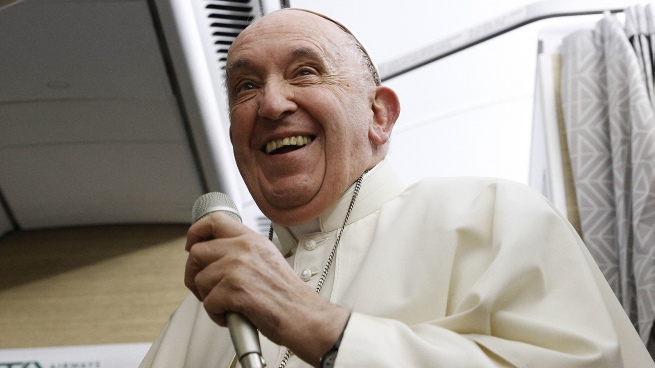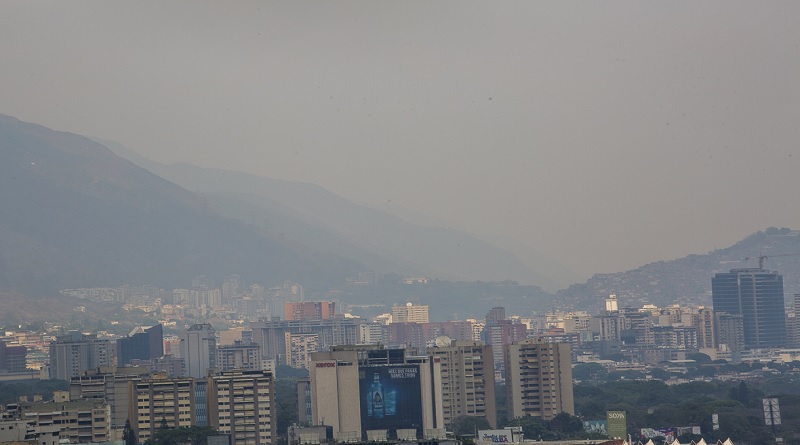Pope Francis made a historic request for forgiveness to Canadian indigenous people for the role of some Christians in the boarding school system deployed by the State of the North American country in the 19th and 20th centuries and spared no gestures of closeness to local natives on a tour of 20,000 kilometers with which he crossed twice the second largest country in the world in the six days of his visit.
In his nine speeches on Canadian soil, the 85-year-old pontiff spared no adjectives and described the 139 residential schools deployed by the State in Canada as “disastrous policies”, of which some 40 were managed by Christian institutions, while considering into practice a “catastrophic experience” and a “devastating mistake” that led to “cultural destruction”.
Later, on the flight back to Rome, he told journalists from all over the world who accompanied him aboard the papal plane, including an envoy from Télam, that it was without a doubt a “genocide”, as the Commission had ordered National Truth and Reconciliation Committee of the Canadian Government in its 2015 94-point report.
The Pope’s visit, in fact, responded to one of the points of the report, number 58, which demanded a pontifical apology on Canadian soil for the role of the Catholic Church, which managed, however, a little less than a third of the residential schools that They were designed and financed by the State.
Francisco, who continues to recover from the injury that drags on his right knee, read the importance and universal reading of showing closeness to local peoples and not only apologized for the role of Catholic institutions but also did so for the “evil” that Christians in general could have caused during the regime that operated between 1883 and 1996.
“I humbly ask forgiveness for the evil that so many Christians committed against indigenous peoplesFrancis said in his first address in Canada to representatives of the First Nations, Métis and Inuit peoples in front of the site where one of the largest schools that served as a boarding school for the children of those populations was erected, Ermineskin, which operated between 1895 and 1975 in Maskwacis, 100 kilometers south of Edmonton.
The Pope’s trip, totally focused on reparation for the indigenous people, was specially designed so that the pontiff could visit a city characteristic of each of the peoples (Edmonton of the First Nations, Quebec of the Métis and Iqaluit of the Inuit), deliberately excluding the country’s capital, Ottawa, in an unusual move.
How was the request for forgiveness received?
Among indigenous leaders, the words were seen as “a sense of hope, a first step“, As the president of the Métis Nation of the State of Aberta, Audrey Poitras, told Télam.
“We must follow the words of the Pope and it is important to work together. Today was an excellent new beginning, we heard from the Pope the things for which we have asked for so long,” he said.
Approach gestures
In addition to the condemnation of the boarding school system that was present in each of the speeches he gave, the Pope also displayed a series of gestures of rapprochement with the natives that completed a visit of empathy and closeness to the natives. A) Yes, visited an indigenous cemetery, participated in a religious ceremony in a lake considered miraculous by the native peoples of Canada and decided to close the tour in Iqaluitjust 300 kilometers from the South Pole, to have an almost familiar encounter with the little more than 7,000 inhabitants of the city that became one of the least populated ever visited by a Pope.
“I feel part of your family,” the Pope said in fact to the indigenous people on the last day of the visit, after acknowledging the world that the evil done by the Christians to the natives was a “wound to the body of Christ” and to ask the local Church not to consider a “superior culture” to the native peoples
“I come to your native lands to tell you personally that I am hurt, to implore God for forgiveness, healing and reconciliation.to express my closeness to you, to pray with you and for you”, were his first words in Canada after visiting an indigenous cemetery, where he prayed alone sitting in the wheelchair with which he moves in some sections of the visit. Then, he repeated the same extremely symbolic prayer in front of Lake Santa Ana, revered by natives and Catholics for its supposed healing properties.
“The Pope’s apology was very important because his empathy and sincerity were noted,” Métis survivor Angie Crerar told Télam.
“It was something that took us years to hear and allows us to start over with an open heart. Let this be the first step to move forward,” Crerar added.
The Pope’s constant requests for forgiveness, however, were not reciprocated by Prime Minister Justin Trudeau.who in his only speech during Francis’ visit omitted any mea culpa on the part of the State for having instituted and financed the boarding school system through which some 150,000 children passed who were separated from their parents for a policy of forced assimilation that sought to “Westernize” their customs. Trudeau limited himself to stating that the reconciliation that lies ahead for the country is “everyone’s responsibility.”
In this context, in addition to making reparations to the indigenous people, the Pope’s visit is seen by the Vatican as an opportunity for the Canadian government to return the gesture made by the 85-year-old pontiff who traveled 20,000 kilometers in six days and finally appoint a head of mission on his behalf to the Holy See, which he has maintained for four years without an ambassador and managed by the charge d’affaires.










